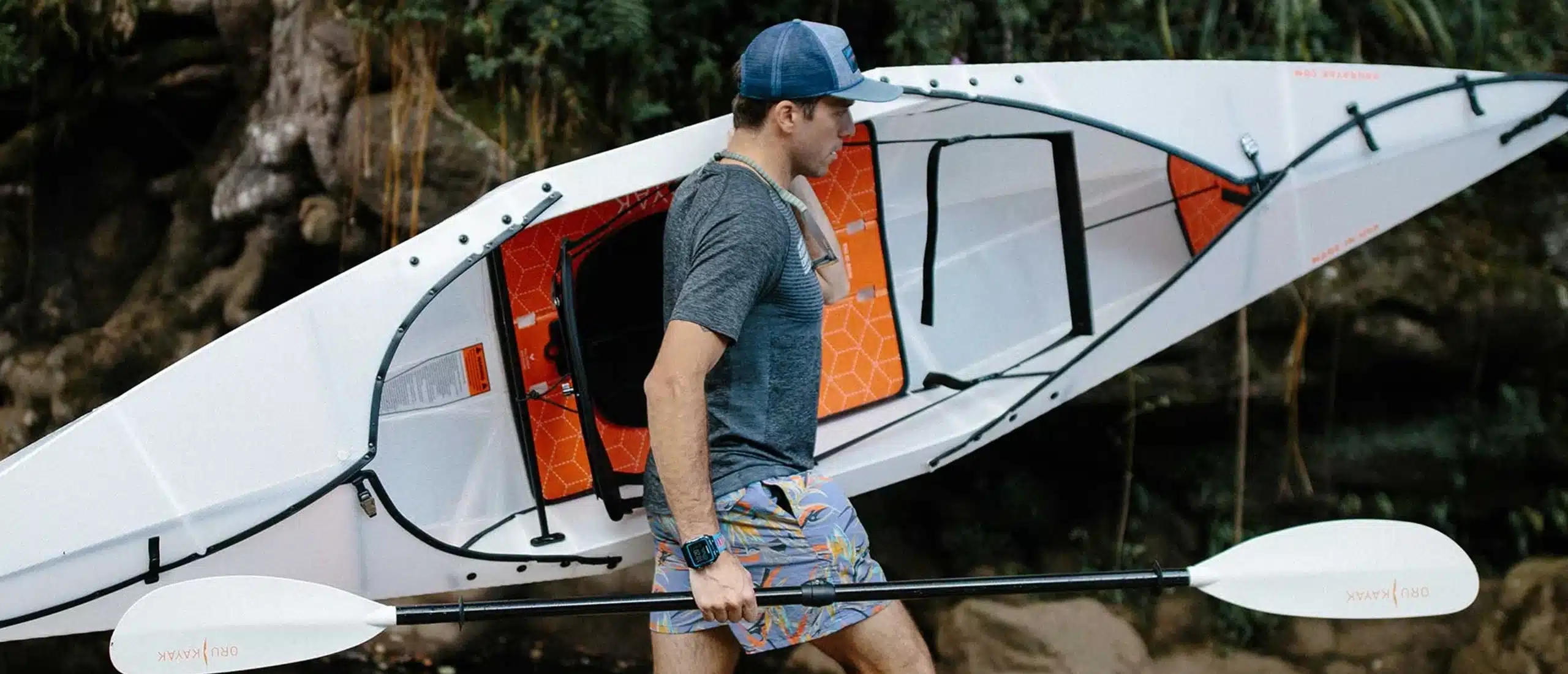There are very few summer hobbies better, and better for you, than kayaking. Whether you’re fishing, looking for whitewater, or paddling down a sleepier stretch of water, kayaking can be both relaxing and strenuous (in a good way). The activity works most of your body—quads, core, biceps, triceps, delts, hamstrings, and more—and, once you’ve got a boat, paddle, and life vest, it’s relatively affordable; just drop your kayak in and go.
Our picks for the best lightweight kayaks, a sub-category of kayaks that’s been growing for a few years now, were selected through product-to-product comparison using the following criteria: materials, price, warranties, reviews, and, yes, weight.
Why Lightweight Kayaks?
Convenience & Transport
So what’s the story with lightweight kayaks? If you’ve pulled a full-sized, full-weight kayak off the roof of a car you’d know how cumbersome they can be. Pulling a 10- or 12-foot hunk of thick plastic from the roof, over your head, and safely onto the ground takes power and a lot of stabilizing muscle activation and, more importantly, isn’t the exercise you signed up for when you got a kayak. And though the weight figures don’t stand out that much—your typical sit-in, recreational kayak will weigh about 60 pounds or so—their unwieldy length make loading, unloading, and hauling to water a tedious undertaking.
Easier Paddling & Longer Rides
Lightweight kayaks are advantageous for other reasons as well. For one, you can probably log more strokes when your vessel is half the weight it usually is, and more strokes mean longer runs on the river, lake, or ocean. If you’re worried about overworking yourself, or you want kayaking to be a bit more recreational and a bit less full-body workout, lightweight kayaks are a solid option.
More Cargo
This one is as simple as it gets: If you’re cutting 50 percent (or more) weight from your boat, you can bring more gear with you. This could mean a more heavily loaded cooler, more food, and other equipment you might take on a kayak trip. This is especially handy for folks who fish out of their kayak or take their kayak down rivers to find good spots to camp.
Ultimate Performance
If you want speed, turn responsiveness, and control, you want a lightweight kayak. Anyone who’s kayaked understands how important controlling direction and quick course correction is to the activity; it’s what keeps you out of tricky spots you should avoid, or slice through them all together.
How Companies Make Lightweight Kayaks
There isn’t a standard definition for a lightweight kayak, and “lightweight kayak” isn’t a category in the industry formally. Instead, you’re shopping for the lightest options in the big kayaking categories—recreational, fishing, touring, whitewater, etc.—as well as length. Fishing kayaks have to be bigger to tow gear and extra features. Recreational kayaks are naturally lighter because they’re more bare bones.
How do they get the weight down? There’s a handful of methods, and some are better than others.
Hard Shell vs. Inflatable vs. Hybrid
Traditional kayaks are made of hard plastic. There are a few different plastics and plastic composites used to create the hard shell, but they’re all going to be heavier than anything inflatable (at least until someone invents a plastic that’s lighter than air). That said, hard-shell kayaks are naturally tougher than inflatable options, and typically handle wind and choppy water more deftly. There are hybrid options—kayaks that use both hard and soft materials—but they’re more rare, and typically come at a high price.
Matters of Size
When kayaking, size is of huge importance. It determines maneuverability, the type of water you can safely paddle, speed, and much more. It’s common for kayak makers to sacrifice length, width, or depth to shed a few pounds and market their product as “lightweight.” To combat this, it’s important to know what length you’re looking for (which you should determine by considering what kind of water you plan to frequent) and how wide and deep a boat that big should be. When you start losing inches in any direction, you’ll lose stability and responsiveness.
Fewer Features
This isn’t as common as size shrinkage or cheap build quality, but we sometimes see brands cutting storage significantly (if not entirely) in the name of losing weight. Does the lightweight kayak you’re looking at have ample storage? Are there cupholders? How much does the seat adjust? Do the foot pedals go deep enough?

The Best Lightweight Kayaks on the Market












